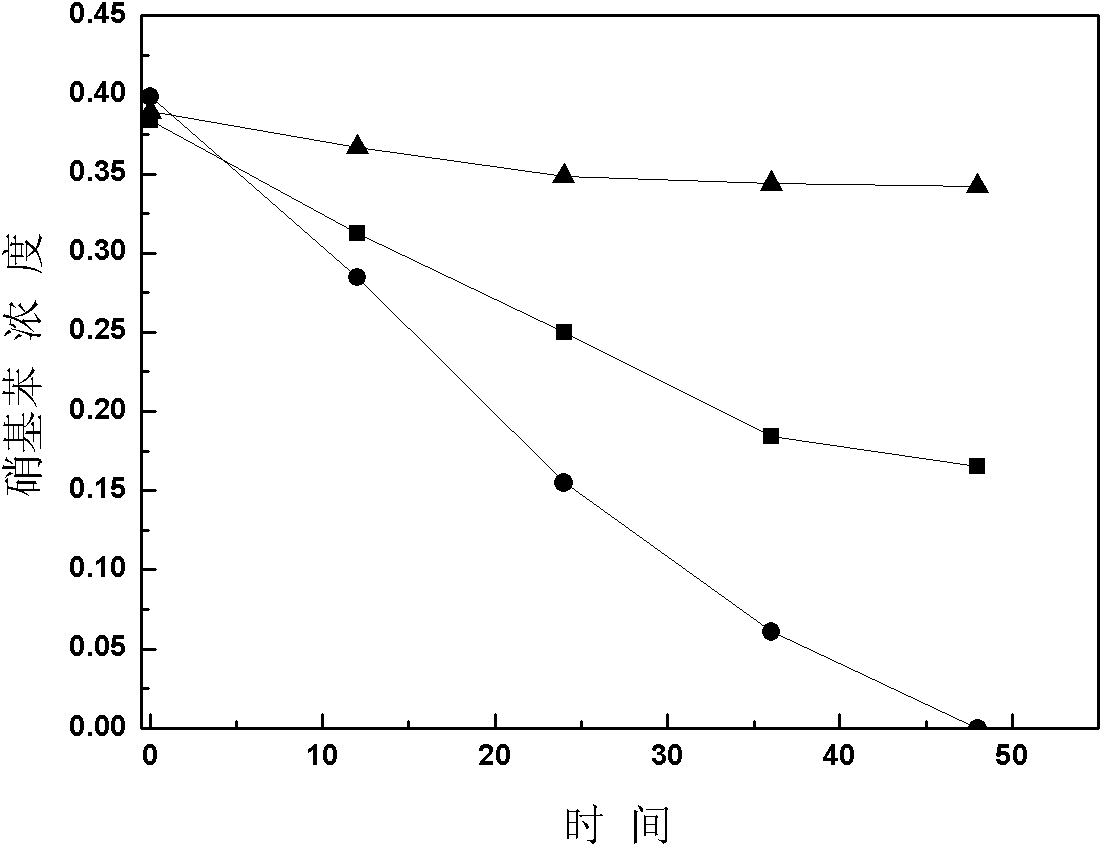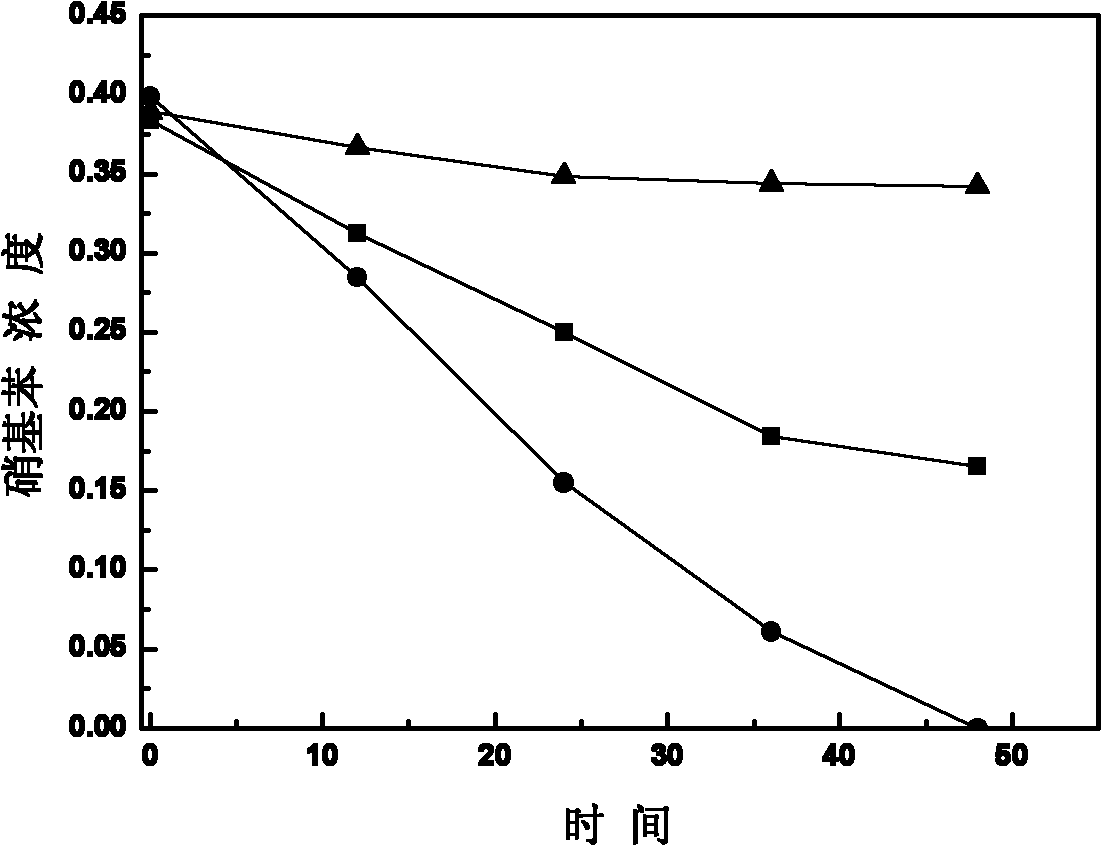Preparation method of porous inorganic filling materials-fixed quinone compound
A technology of inorganic fillers and quinone compounds, which is applied in the field of preparation of porous inorganic fillers to immobilize quinone compounds, can solve problems such as secondary pollution, loss, and accelerated anaerobic biotransformation of refractory organic matter, achieve good catalytic performance, and solve technical bottlenecks Effect
- Summary
- Abstract
- Description
- Claims
- Application Information
AI Technical Summary
Problems solved by technology
Method used
Image
Examples
Embodiment 1
[0019] (1) At room temperature, put 5g of inorganic filler into alumina sol, soak for 5 minutes, dry at 80°C for 1h, then put it in a muffle furnace and dry at 700°C for 3.5 hours, cool to room temperature for later use; (2) Put the above-mentioned inorganic filler into a dry flask, add 50mL of toluene solution, then add 5g of 3-aminopropyltriethoxysilane, react under reduced pressure and vacuum rotation for 4h at room temperature, then wash with acetone several times, add 50mmol / L hydrochloric acid, in a water bath at 50°C for 1h, washed with acetone, and air-dried for later use. (3) Put the above-mentioned inorganic filler into a flask, add 2mol / L NaOH solution, slowly add dichloromethane, 0.01mol / L solution of anthraquinone compound containing sulfonyl chloride group as solvent, react at 30°C for 8h, and then Wash with ethanol and water successively, and dry for later use. The anthraquinone compound containing a sulfonyl chloride group is derived from a sulfonated anthraqu...
Embodiment 2
[0021] (1) At room temperature, put 5g of inorganic filler into alumina sol, soak for 5-20 minutes, dry at 80°C for 1h, then put it in a muffle furnace and dry at 700°C for 3.5 hours, and cool to room temperature Standby; (2) Put the above-mentioned inorganic filler into a dry flask, add 50mL of toluene solution, then add 10g of 3-aminopropyltriethoxysilane, react under reduced pressure and vacuum for 6h at room temperature, and then wash with acetone for several times , add 50mmol / L hydrochloric acid, bathe in water at 50°C for 1h, wash with acetone, and air dry for later use. (3) Put the above-mentioned inorganic filler into the flask, add 2mol / L NaOH solution, slowly add the solvent as dichloromethane, 0.02mol / L anthraquinone compound solution containing sulfonyl chloride group, react at 30°C for 10h, and then Wash with ethanol and water successively, and dry for later use. The anthraquinone compound containing a sulfonyl chloride group is derived from a sulfonated anthraq...
PUM
 Login to View More
Login to View More Abstract
Description
Claims
Application Information
 Login to View More
Login to View More - R&D
- Intellectual Property
- Life Sciences
- Materials
- Tech Scout
- Unparalleled Data Quality
- Higher Quality Content
- 60% Fewer Hallucinations
Browse by: Latest US Patents, China's latest patents, Technical Efficacy Thesaurus, Application Domain, Technology Topic, Popular Technical Reports.
© 2025 PatSnap. All rights reserved.Legal|Privacy policy|Modern Slavery Act Transparency Statement|Sitemap|About US| Contact US: help@patsnap.com


